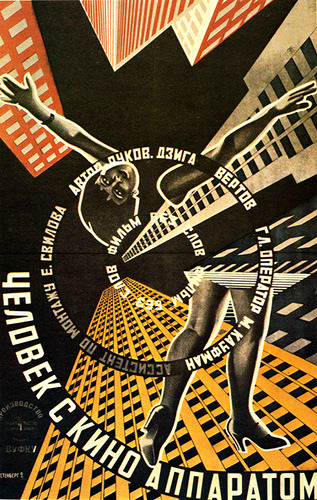Constructivism
“A style or movement in which assorted mechanical objects are combined into abstract- mobile structural forms. The movement originated in Russia
(Oxford
“As with Futurism, one of the main characteristics of Constructivism was a total commitment to and acceptance of modernity. The art was typically totally abstract, with the emphasis on geometric shapes and experimentation. Constructivist art was optimistic, but would not tend to be emotional in any way and subjectivity and individuality were subsumed in favour of objective, universal forms.”(http://www.keithgarrow.com/modern-art-styles/what-is-constructivism.html)
So for our project to feature constructivism, we must look at:
· Modernity – moving away from the literal and over to the abstract
· Geometric shapes
· Experimenting with structure
· Optimism, yet un-emotional
· Almost has a cold feeling – needs to be objective, descriptive, symbolic
Examples of constructivist art:
(http://27.media.tumblr.com/tumblr_la78xkBYuF1qalq4so1_400.jpg)

These images show different styles of constructivist art, the first image has a ‘pop art’ look to it, however still shows the feeling of an unstable society, a woman free falling, except she isn’t a woman she is just a collection of body parts, mixed up with a large spiral of words.The second image shows a constructivist structure, it looks as though it hasn’t been measured or built properly; even though obviously it was designed this way. The metal and coldness of the structure give it strength whereas the actual design makes it look warped and wobbly and surreal. This may be useful to remember when creating our set, it shows how Gregor must be feeling having his whole life change, he must question how real it all is.
Expressionism
A style of painting, music, or drama in which the artist or writer seeks to express the inner world of emotion rather than external reality.
(Oxford
“A term used to denote the use of distortion and exaggeration for emotional effect. When applied in a stylistic sense, with reference in particular to the use of intense colour, agitated brushstrokes, and disjointed space. Rather than a single style, it was a climate that affected not only the fine arts but also dance, cinema, literature and the theatre.
Expressionism is an artistic style in which the artist attempts to depict not objective reality but rather the subjective emotions and responses that objects and events arouse in him. He accomplishes his aim through distortion, exaggeration, primitivism, and fantasy and through the vivid, jarring, violent, or dynamic application of formal elements. In a broader sense Expressionism is one of the main currents of art in the later 19th and the 20th centuries, and its qualities of highly subjective, personal, spontaneous self-expression are typical of a wide range of modern artists and art movements. Unlike Impressionism, its goals were not to reproduce the impression suggested by the surrounding world, but to strongly impose the artist's own sensibility to the world's representation. The expressionist artist substitutes to the visual object reality his own image of this object, which he feels as an accurate representation of its real meaning. The search of harmony and forms is not as important as trying to achieve the highest expression intensity, both from the aesthetic point of view and according to idea and human critics”
So to include expressionism in our set we need to look at:
· Distortion and exaggeration for emotional effect
· Not to focus on what is actually there, but shows the feelings that are behind the object, how it inspires you.
· Emotion
· Symbolism
Examples of Expressionist art:
(http://www.mintongallery.com/JosephMinton/joseph%20minton%20art.jpg)
(http://virtual.clemson.edu/groups/dial/sffilm/kirchner_redtower.jpg)
You can really see the melancholy mood in both of these paintings by Minton and Kirchner respectively. I think this would be useful to remember when designing the two rooms, nobody is happy in that apartment, they are all hiding a huge secret and you would probably be able to feel the loneliness and isolation seeping through their home.

No comments:
Post a Comment